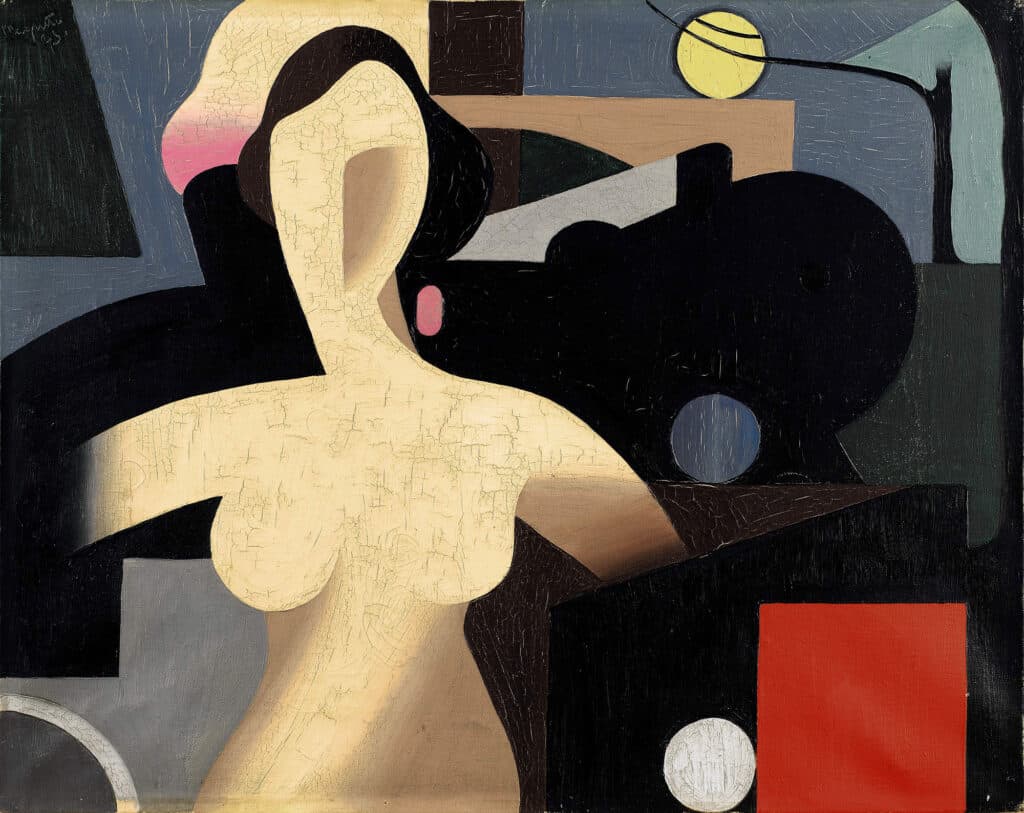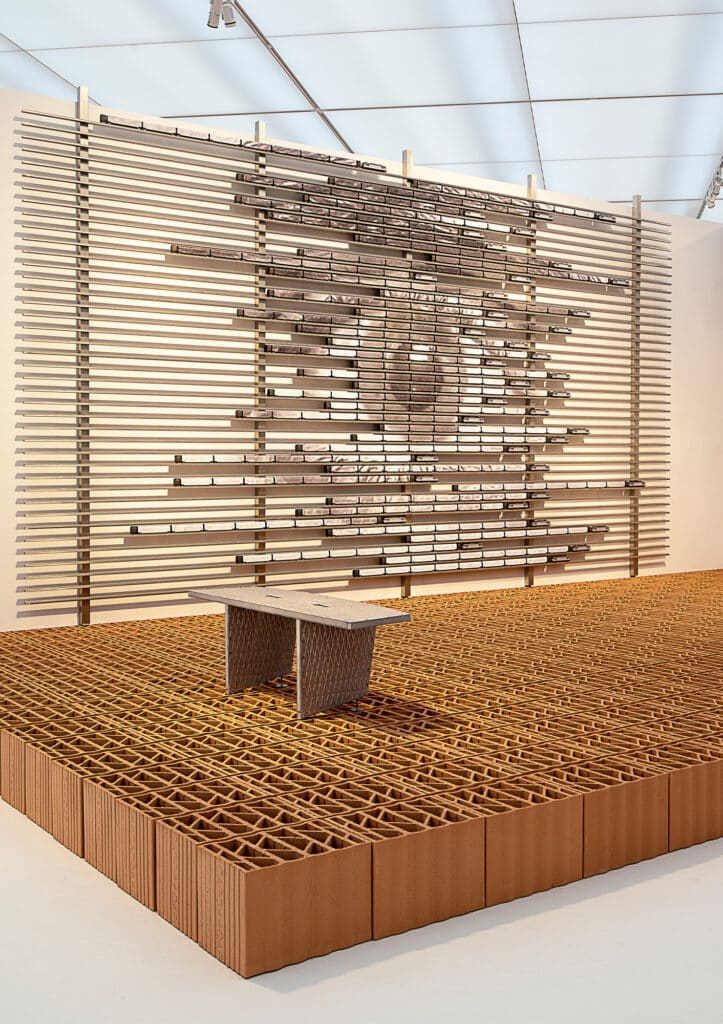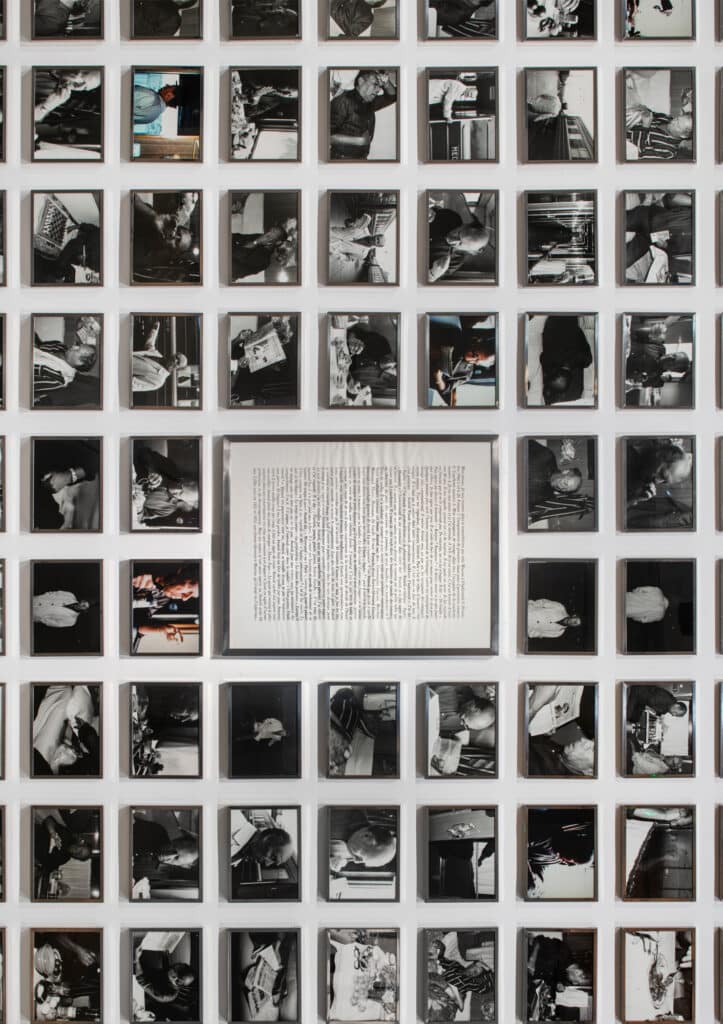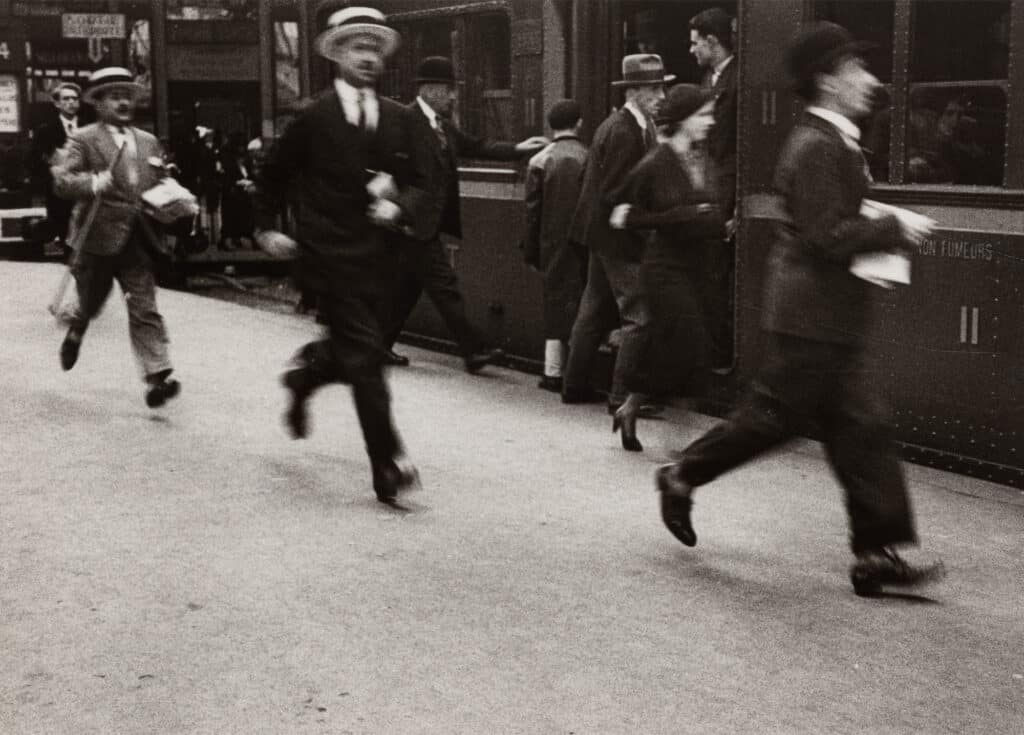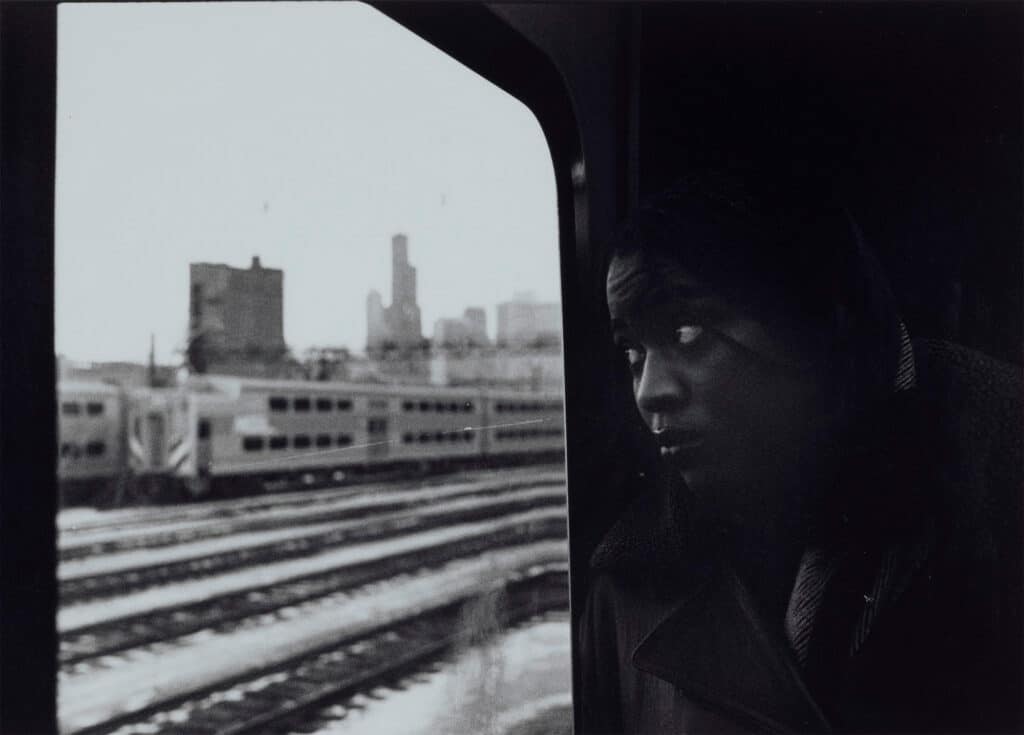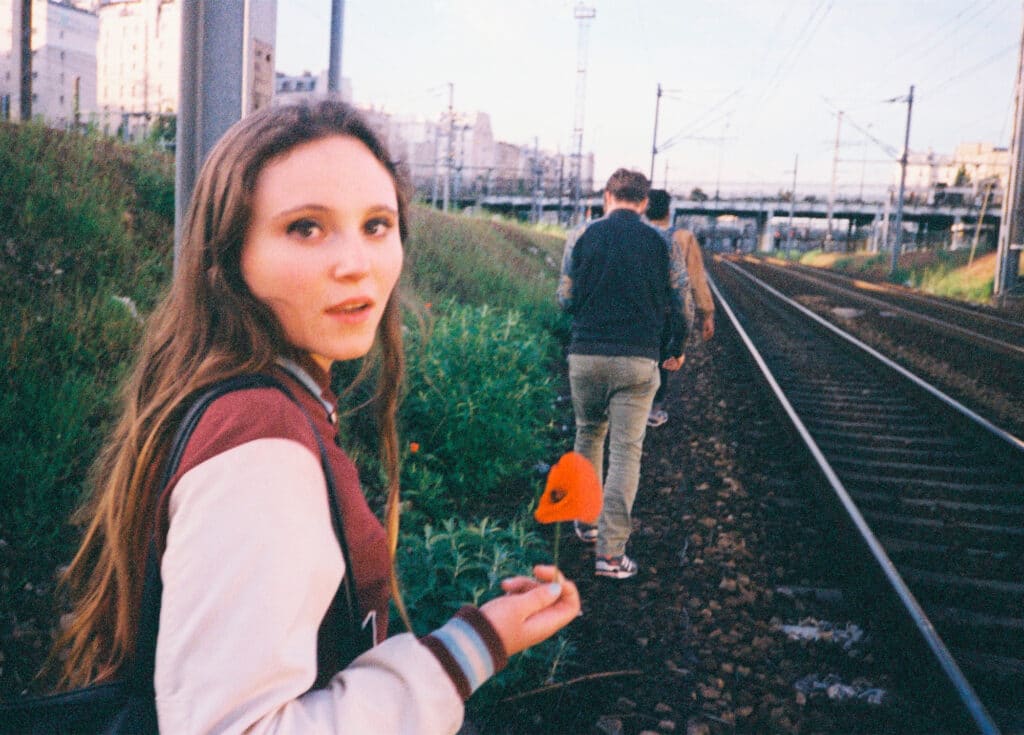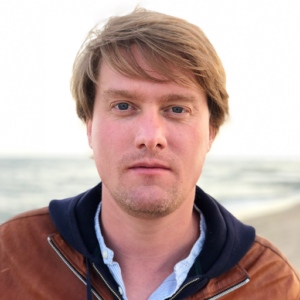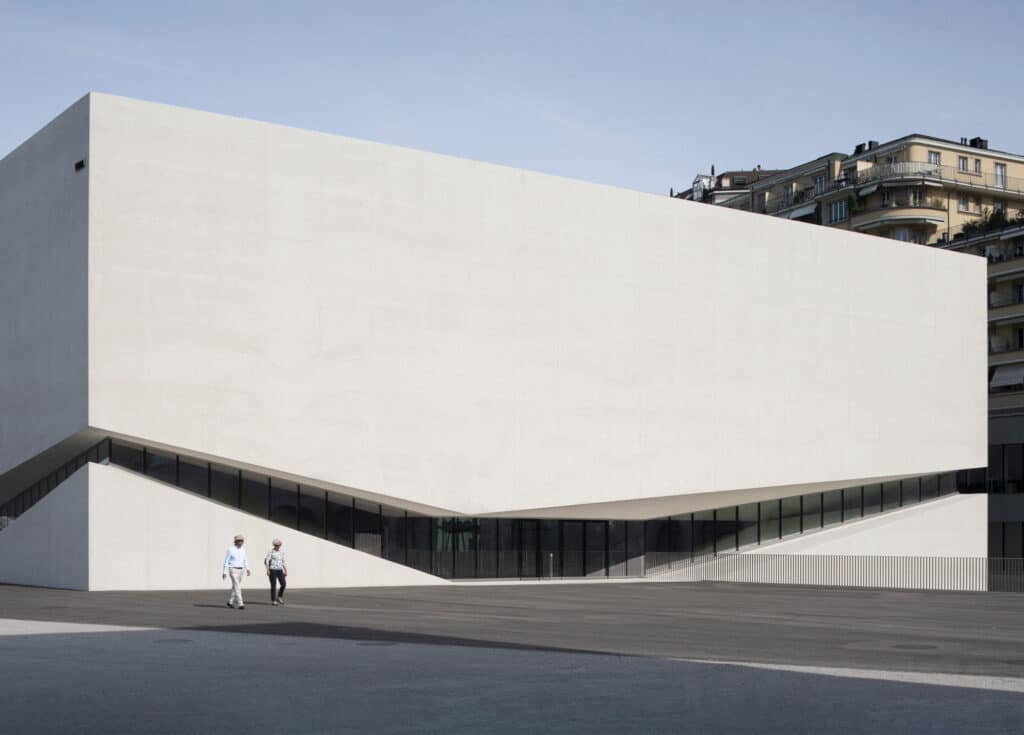
Platforme 10, Lausanne’s new art site, can be reached quickly from the train station. With a surface area of 25,000 square meters, composed of an esplanade and two imposing buildings, the art center is built on the site of former railway warehouses. In fact, it’s right on the rail track. Visitors are invited to stroll around its warm esplanade, enjoy the restaurants, terraces, bookstores, and boutiques before buying a ticket to the museum of their choice. Plateforme 10 is home to the three cantonal museums of Vaud: mudac (Cantonal Museum of Contemporary Design and Applied Arts), Photo Elysée, and the MCBA (Cantonal Museum of Fine Arts).
“The idea behind the campus is to have three museums that maintain their singularity, their history, their perspectives, but which constantly dialogue, either around shared themes, or, more often, around themes that are developed by the museums themselves,” explains Patrick Gyger, executive director of the Fondation Plateforme 10, known to the French public as the director of lieu unique in Nantes for the past 10 years.
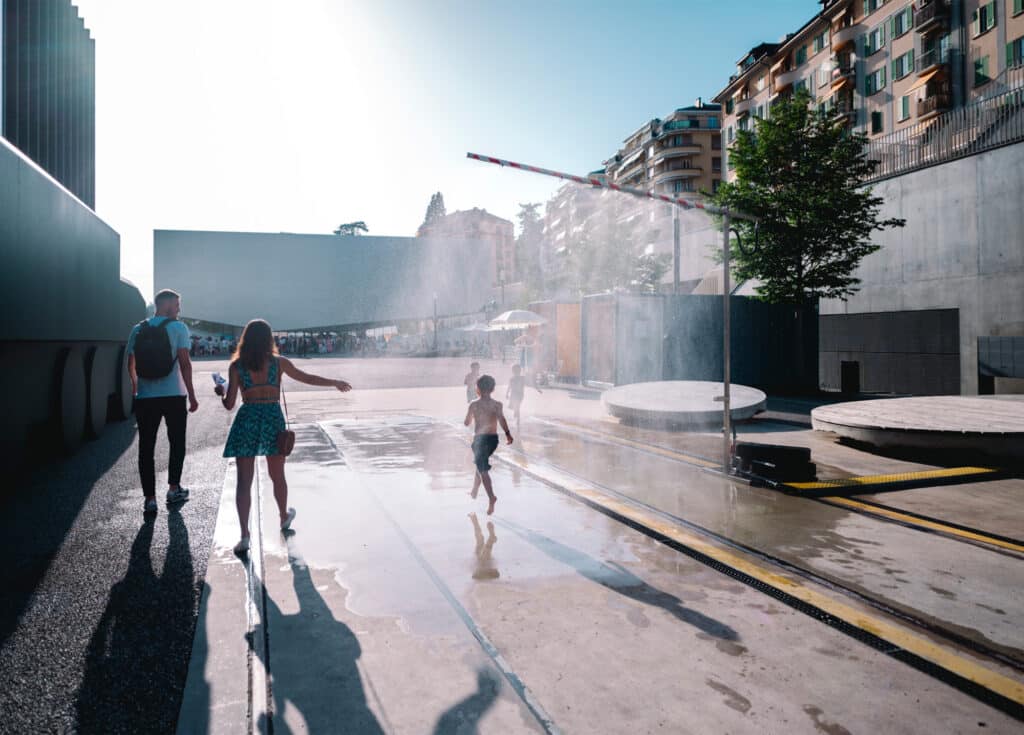
The project has an annual operating budget of 27 million Swiss francs and follows a unique economic model, bringing together, within a single foundation, institutions that have very different statuses: the Museum of Fine Arts, which was already a foundation under public law; the Museum of Photography, which is a cantonal museum, but supported largely by a foundation under private law; and the mudac, a municipal museum. From that budget, 20 million Swiss francs come from public subsidies. “The idea is to harmonize and pool fundraising, operating costs, and certain services, such as human resources, administration, and information technology,” explains Gyger. The goal is, of course, to attract more visitors from outside Lausanne: “People from the region, but also from German-speaking Switzerland, people from Paris, Milan, Basel….”
This new museum campus is also a turning point for the institutions involved and their management. Photography historian and curator Nathalie Herschdorfer has just taken over the reins at Photo Elysée; art historian Juri Steiner has been at the MCBA since July; and Chantal Prod’Hom, director of the mudac since its creation, will oversee the museum’s development for one final year. “Tatyana Franck has brought a breath of fresh air to Photo Elysée and steered its transformation: that’s how the Musée de l’Élysée left its eighteenth-century mansion and Photo Elysée found a home in a contemporary museum space designed expressly for the purpose,” says Herschdorfer.
Windows on the world
The inaugural event, entitled Train Zug Treno Tren, was therefore conceived jointly by the three museums. Photography enthusiasts will be drawn to the site which is now home to the mudac and Photo Elysée.
On the second floor, where the mudac unveils its exhibitions, several works catch one’s eye. One is Anatoli (1984) by Sophie Calle, which depicts the photographer’s journey to Vladivostok on the Trans-Siberian Railway in October 1984. It tells the story of her time with Anatoli Voroli Fiodorovich, a random travel companion with whom she shares a compartment for two. To deepen their acquaintance, they communicate with hand gestures. Anatoli, 65, divorced, father of two daughters, cooks the meals and maintains a steady supply of vodka; Sophie washes the dishes, cleans, and makes the bunk beds.
Another work, Jonathan Monk’s series Waiting for Famous People (1995–1997), is done in a more comical register. The artist is photographed at train stations, impatiently awaiting the arrival of celebrities who will obviously never come. He holds up signs for Al Capone, Madonna, Elvis, Sigmund Freud, or the Spice Girls. “He is someone who has a great sense of humor,” says Marco Costantini, the curator of the exhibition. “He’s very subtle, enjoys playing games.”
At the underground level, Photo Elysée presents its interpretation of the train through the exhibition Destins Croisés [Crossed Destinies], with over a century and a half of railway history, from the very first, early nineteenth-century railway experiments through the present.
In an overloaded scenography, where painting and cinema take up almost as much space as photography, visitors might have a hard time to find their bearings. Covering some 350 works, documents, and objects, the exhibition can be toured along three routes and fifteen themes. At the end, we are left with the feeling of having boarded the wrong train. “I wanted it to be very abundant and polyphonic,” explains Marc Donnadieu, chief curator. “Each of the fifteen stages shows how things circulate and get enriched from one medium to the next. It’s a reflection that is made mostly from a photographic point of view.”
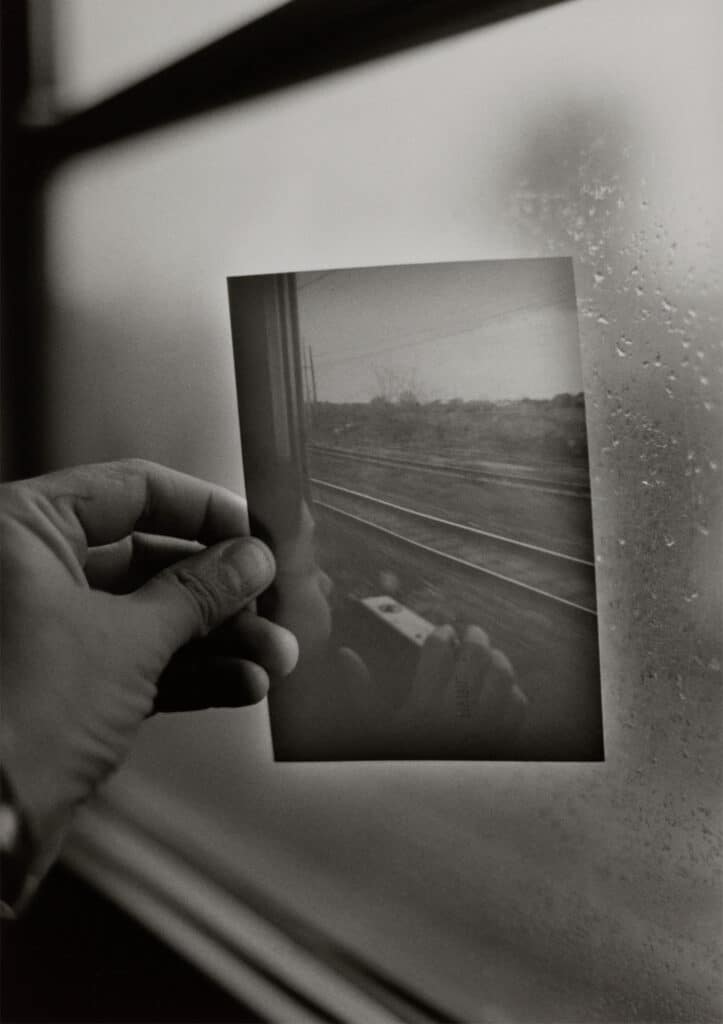
As for the visual masterpieces, they are on display at the MCBA. Paintings in particular: de Chirico and his surrealist trains sit next to works by his “disciples,” in a classy, tasteful display. This exhibition brings an intense journey to a close, and augurs well for Plateforme 10, in a city that in addition to the charm of its landscape and the warm welcome of its inhabitants, is now endowed with real cultural assets.
